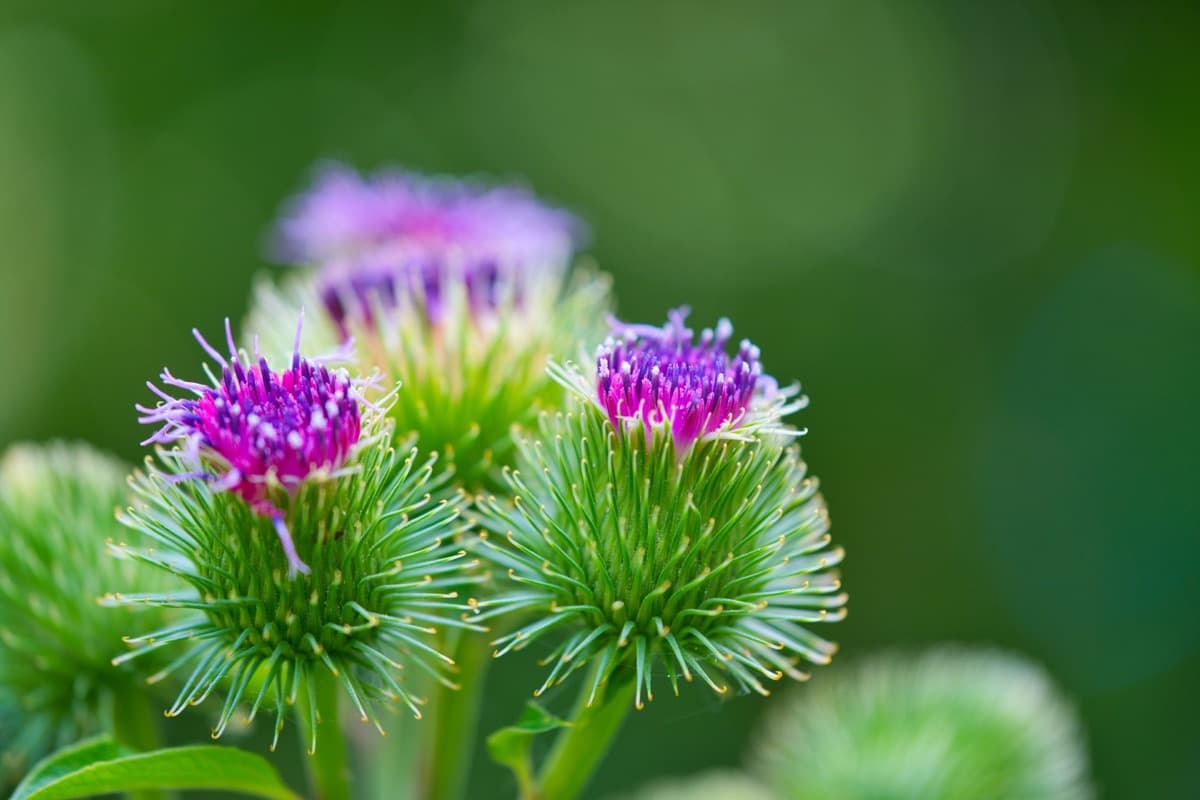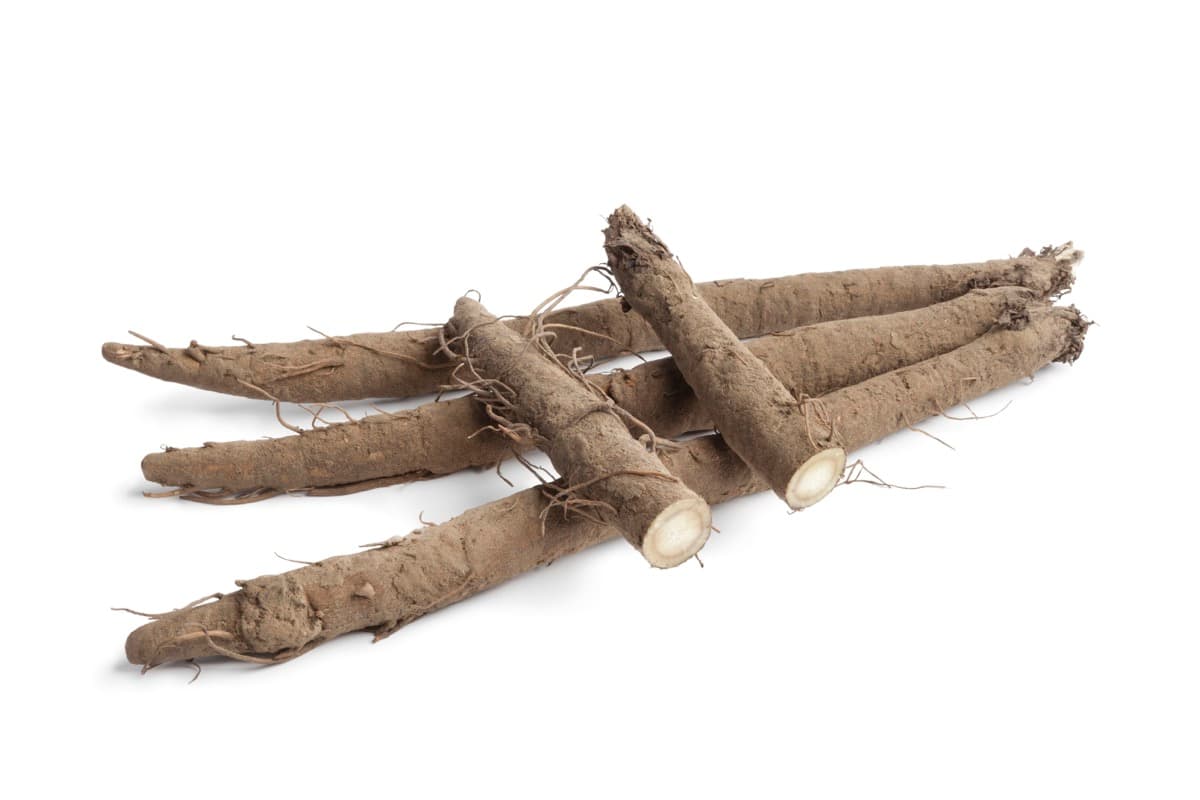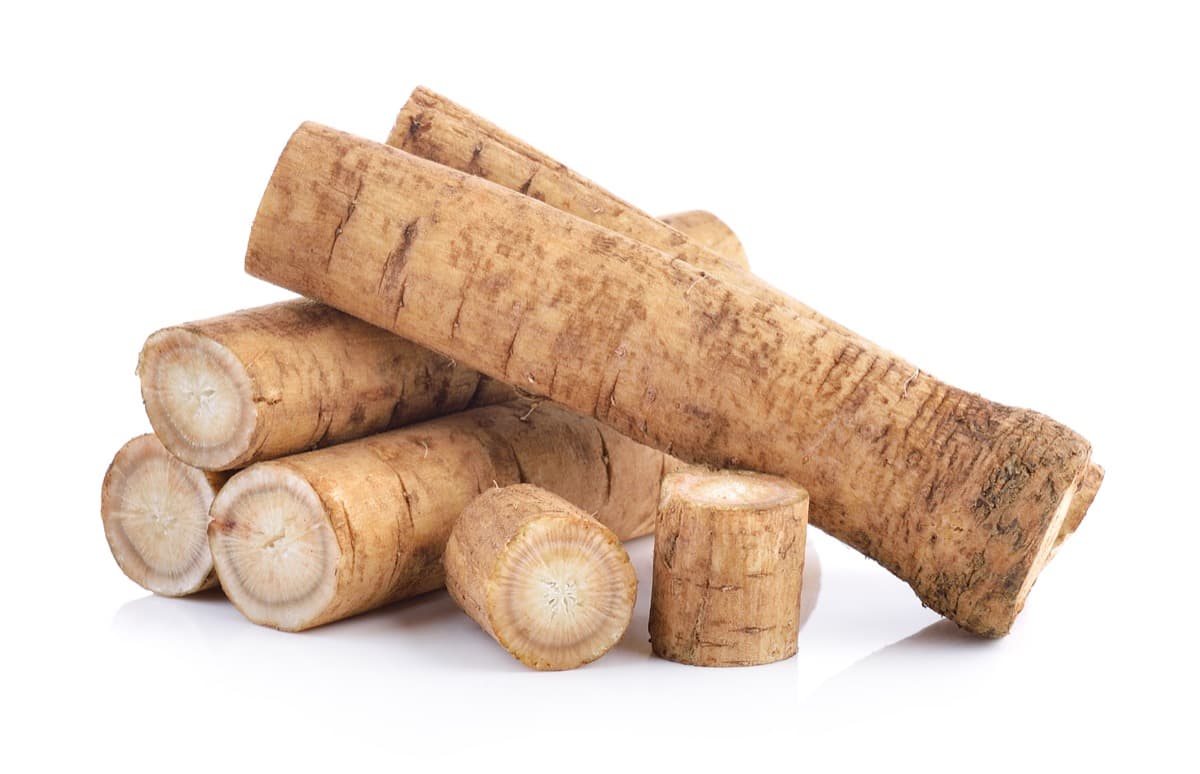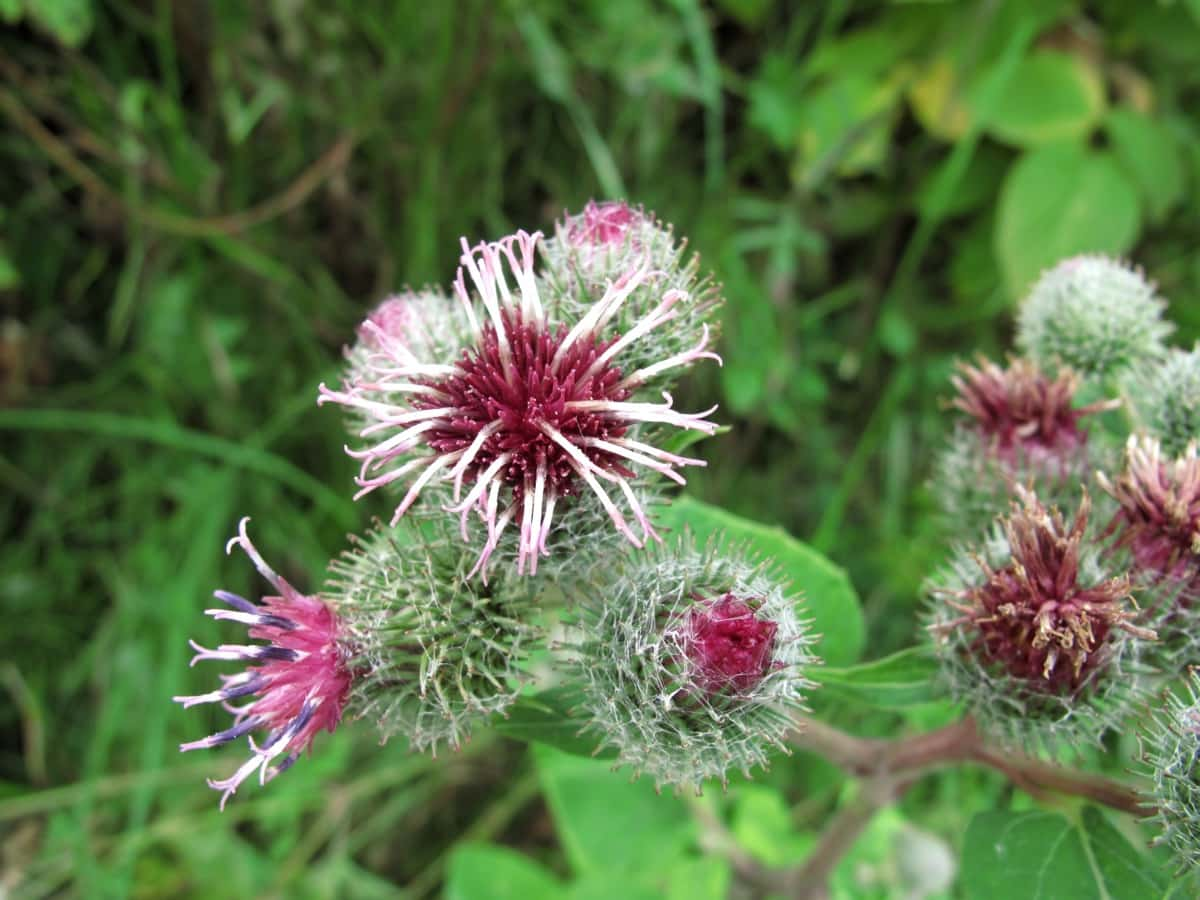Growing and caring for Burdock can be a rewarding experience for gardeners of all levels. This versatile plant offers culinary uses and medicinal properties that have been valued for centuries. Whether you grow Burdock in your backyard or containers on your balcony, it is important to remember that this plant thrives best in well-drained soil with plenty of sunlight.

Regular weeding and mulching retain moisture in the soil when caring for Burdock plants. Additionally, monitoring pests such as slugs or aphids is crucial to prevent damage to the leaves or roots. By following the planting instructions, providing care, and harvesting at the right time, you can ensure a successful harvest of this remarkable herb.
How to Grow and Care for Organic Burdock
A Step-By-Step Guide to Planting Organic Burdock Seeds in Your Garden
Choose a sunny spot in your garden that receives at least six hours of direct sunlight daily. Burdock plants thrive in full sun and well-drained soil. Prepare the soil by removing weeds and loosening it with a garden fork or tiller. Burdock prefers fertile soil, so compost or well-rotted manure can greatly improve its growth. Sow the Burdock seeds directly into the prepared soil about half an inch deep and one foot apart. Keep the soil consistently moist during germination to ensure successful seedling emergence.
Once the seedlings have reached about two inches tall, thin them out to provide ample space for growth, leaving about three feet between each plant. During the growing season, keep weeds under control around your Burdock plants using organic mulch or hand-weeding techniques. This will prevent competition for nutrients and water. Aim for around one inch of water per week through rainfall or irrigation methods such as drip irrigation or a soaker hose.
Best Soil Conditions and Preparation for Growing Organic Burdock
When it comes to growing Burdock, providing the best soil conditions is crucial for optimal growth. Burdock plants thrive in well-draining soil with a pH between 5.5 and 7.5. Before planting, prepare your soil by removing weeds and loosening it with a garden fork. To increase the nutrient content of the soil, consider adding organic matter. Organic amendments will provide essential nutrients for healthy Burdock growth without relying on synthetic fertilizers.
In case you missed it: Thriving Under Glass: Unleashing the Power of Organic Greenhouse Growing Techniques

Burdock also appreciates loose and loamy soil that allows its long taproots to penetrate easily. You can add sand or perlite to enhance drainage and prevent waterlogging to achieve this. Another important factor is sunlight exposure. Burdock needs full sun but can tolerate partial shade as well. Choose a spot that gets at least six hours of direct sunlight daily. Properly preparing your soil before planting ensures that your Burdock plants have everything they need to flourish naturally without harmful chemicals or pesticides.
Tips For Germinating Burdock Seeds Indoors
Before sowing your Burdock seeds, soak them in water overnight. After soaking, place the seeds on a damp paper towel or cloth and cover them with another damp cloth to keep them moist. Next, choose an appropriate container for sowing your seeds. A shallow tray or seedling pot is ideal, as it allows for easy monitoring of moisture levels and prevents overcrowding.
To create optimal conditions for germination, provide warmth and humidity. You can achieve this by placing your seeded tray or pots in a greenhouse or using a seedling heat mat. Once your Burdock seedlings have emerged, provide them with adequate light to promote healthy growth. Place them near a south-facing window or use artificial grow lights if necessary.
Organic Pest Control Methods for Protecting Burdock Plants
When growing organic Burdock, one of the challenges gardeners face is dealing with pests. However, effective and natural methods are available to protect your precious Burdock plants without harmful chemicals. Intercropping your Burdock plants with insect-repelling herbs such as lavender or marigold can help deter pests.
In case you missed it: Insect Pests of Rose Plants: Chemical, Organic, and Natural Control Management

These companion plants emit strong scents that act as a natural deterrent, keeping unwanted insects at bay. Creating homemade sprays using ingredients like garlic, onion, or neem oil can effectively control pests naturally. Mix these ingredients with water and spray onto the leaves of your Burdock plants to repel insects. Encouraging beneficial insects in your garden can aid in controlling pest populations naturally.
Using row covers made from lightweight fabric helps create a physical barrier between your Burdock plants and potential invaders like flies or moths while still allowing air circulation and sunlight penetration. Maintaining healthy soil fertility through proper watering techniques and regular mulching can also improve plant resilience against pests by promoting robust growth and reducing stress levels.
Watering And Irrigation Techniques for Organic Burdock Cultivation
Watering and irrigation play a crucial role in successfully cultivating organic Burdock. This hardy plant requires consistent moisture to thrive, especially during its early stages of growth.
Burdock has a deep taproot that allows it to access water from lower soil layers. Water deeply and slowly to encourage strong root development, moistening the entire root zone. Applying organic mulch around the base of your Burdock plants can help retain soil moisture by reducing evaporation. Use materials like straw or compost to create a protective barrier.
Consider using drip irrigation systems to deliver water directly to the root zone. This method reduces water waste and minimizes weed growth. Water your Burdock plants early in the day so that any excess moisture on leaves or stems can dry before evening, preventing fungal diseases. Regularly check the moisture level of your soil by inserting your finger into it up to an inch deep; if it feels dry at this depth, it’s time to water. Find a balance and adjust watering practices based on weather conditions and the specific needs of individual plants.
Natural Fertilizers and Amendments for Healthy Organic Burdock Growth
Natural fertilizers and amendments are crucial in promoting healthy organic Burdock growth. These natural additives help nourish the plants and enhance their overall health by providing essential nutrients to the soil. Composting kitchen scraps, yard waste, and other organic materials can provide a nutrient-rich soil amendment that supports robust plant growth. Another valuable natural fertilizer option is manure from herbivores such as cows or horses.
This animal waste contains high nitrogen, phosphorus, and potassium levels – key nutrients for healthy plant development. When using manure as a fertilizer, it’s important to let it age or compost before applying it to your garden beds. Additionally, bone meal can enrich the soil with phosphorus—a vital nutrient for root development in Burdock plants. This organic amendment slowly releases phosphorus over time, ensuring steady uptake by the roots.
Pruning And Thinning Techniques for Organic Burdock Plants
Pruning and thinning are essential techniques for maintaining healthy organic Burdock plants. Regular pruning helps to promote better air circulation and sunlight penetration, reducing the risk of fungal diseases. It also encourages new growth and improves overall plant vigor. When pruning Burdock, remove any dead or damaged leaves or stems. Use sharp pruners to make clean cuts above a leaf node or bud. This will stimulate new growth in that area.
In case you missed it: How to Get Rid of Mealybugs on Plants: A Full Guide to Home Remedies, Organic and Chemical Control

Thinning is another important technique for ensuring optimal plant health. Burdock plants can grow quite large, so it’s crucial to space them out properly to prevent overcrowding. Thin out weaker or smaller plants so that each remaining plant has enough room to grow and access necessary nutrients. Regularly monitor your Burdock plants throughout the growing season and prune them as needed. Remember not to remove too much foliage at once, which may weaken the plant. Instead, aim for gradual pruning sessions throughout the season.
Identifying And Treating Common Diseases in Organic Burdock
One common disease that affects Burdock is leaf spot, which manifests as small spots or lesions on the leaves. These spots may be yellow, brown, or black and can eventually cause the leaves to wither and die. Removing infected leaves and ensuring good air circulation around the plant is important to treat leaf spot. Another disease to watch out for is root rot, caused by overwatering. Root rot can lead to plant wilting and eventual death if left untreated. To prevent root rot, ensure your Burdock plants are planted in well-draining soil and avoid overwatering.
Powdery mildew is another common issue that affects Burdock plants. It appears as a white powdery coating on the leaves and stems of the plant. Increase air circulation around the plants by spacing them apart to combat powdery mildew. Burdock can also fall victim to aphid infestations. Aphids suck sap from the plant’s foliage causing stunted growth and distorted leaves. To control aphids organically, spray a mixture of water and dish soap onto affected areas regularly.
How To Grow Burdock from Root?
Choose a healthy Burdock root for propagation. Look for roots that are firm, free of blemishes, and have strong growth nodes. Before planting the root cutting, prepare the soil by loosening it. Remove any rocks or debris that may hinder root development. Dig a hole deep enough to the Burdock root cutting, which should be around 6-8 inches long. Place the root in the hole horizontally and cover it with soil, exposing just the top inch.
In case you missed it: Best Ways to Get Rid of Thrips on Plants: Naturally, Organically for Indoors and Outdoors

After planting, water thoroughly until moisture reaches the root level. Mulch around your Burdock plants with organic matter such as straw or compost to conserve moisture and suppress weeds. Depending on your desired use (leaves or roots), harvest when leaves reach maturity or roots have reached their optimal size (usually after one year).
Growing Burdock in Pots
Growing Burdock in pots is convenient for those with limited space or who want to keep the plant contained. First, choose a large pot with good drainage holes. Burdock has long taproots, so a deep container will allow the roots to grow properly. Fill the pot with well-draining soil mixed with compost or organic matter to provide nutrients. When planting Burdock seeds, sow them about 1/4 inch deep and cover lightly. Keep the soil moist during germination, which usually takes two weeks.
Once the seedlings emerge, thin them out so each plant has enough space to grow. Place your potted Burdock in a sunny location where it can receive at least six hours of sunlight daily. Water regularly to keep the soil evenly moist. Be mindful not to overwater, as this can lead to root rot. Regularly check for pests such as aphids or caterpillars and take appropriate measures using organic pest control methods if necessary.
Conclusion
Growing and caring for organic Burdock can be a rewarding experience. Proper watering techniques and organic fertilizers will also help promote robust growth. Pruning and thinning techniques are important for maintaining optimal plant health and preventing overcrowding. Regularly inspecting your Burdock plants for signs of common diseases is crucial to take prompt action if needed.
In case you missed it: How to Improve Your Clay Soil Organically: By Compost, Mulch, and Cover Crop

When it comes time to harvest, remember that the roots are the main edible part of Burdock. Carefully dig up the roots and store them properly for later culinary or medicinal use. Consider growing Burdock in pots or containers if your garden has limited space. This allows you to enjoy this versatile plant even if you don’t have a large outdoor area. By incorporating these tips into your organic gardening practices, you can successfully grow and care for organic Burdock while promoting sustainability and environmental consciousness.
- How to Grow Tomatoes Organically at Home: A Comprehensive Guide
- Organic Gardening on a Budget: Low-Cost Methods and Materials
- Gongura Seed Germination and Planting Methods
- Cabbage Seed Germination and Selection
- Broccoli Seed Germination and Selection
- Asparagus Seed Germination and Variety Selection
- Seasonal Flower Gardening: Best Practices for Spring, Summer, Fall, and Winter
- How to Grow Hibiscus from Flower
- Plantation Ideas for Home Decoration: A Beginners Guide
- Flower Garden Designs and Layouts for Beginners
- Planting and Spacing Techniques in Papaya: A Beginner’s Guide
- Growing Gold: Essential Techniques for Planting Pineapples
- How to Make Kalanchoe Plant Bushy: Home Remedies and Solutions
- 11 Reasons Why Your Gardenia is Not Blooming: Home Remedies and Solutions
- Eco Elegance: The Guide to Designing a Drought-Tolerant Landscape
- Gardening on a Slope: Strategies for Hillside Landscaping
- Nourish and Flourish: Top Organic Mulches for Thriving House Plants
- Everything You Want to Know about Indian Mogra Flower: Discover Uses and Growing
- Green Thumb Success: Expert Tips for Cultivating Greenhouse Pumpkins All Year Round
- Maximize Growth & Flavor: The Ultimate Guide to Companion Planting in Herb Gardens
- How to Control Rhododendron Problems Naturally: Home Remedies and Organic Ways to Fix Them
- Natural Magic: The Remarkable Benefits of Cinnamon for Plants
- Best Steps to Revive Dying Tulip with Natural and Organic Treatment
- 10 Reasons Why Your Angel Trumpet is Not Blooming: Remedies and Treatment
- How to Fix Periwinkle Leaf and Flower-Related Problems: Natural Remedies and Solutions
- How to Fix Zinnias Leaf and Flower Problems: Discover Natural and Home Remedies
- Organic Steps to Induce Lemon Tree Flowers: A Comprehensive Guide
- Bloom Booster: Crafting the Perfect Homemade Bougainvillea Fertilizer
- Optimizing Growth: A Guide to Applying NPK Fertilizer for Potted Plants
- 10 Best Homemade Fertilizers for Rubber Plant: DIY Recipes and Application Method
- How to Boost Female Pumpkin Flowers: Effective Steps for More Flowers and High Yields
- Transform Your Indoor Garden: Top Benefits of Pink Salt for Houseplants
- 10 Best Homemade Fertilizers for Peacock Plants (Calathea): Easy DIY Guide
- Unlock Blooms: 9 Reasons Why Your Potted Chrysanthemum is Not Blooming
- 8 Reasons Why Your Potted Hibiscus is Not Blooming: Fix it with Simple Solutions